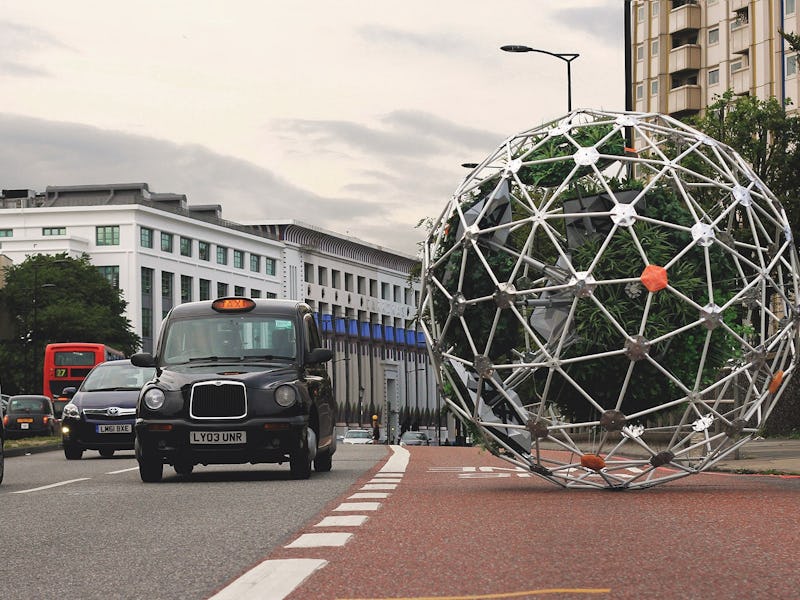Watch London's Self-Driving, Plant-Navigated Garden Search for Ideal Conditions
It's not a prank — it's a mobile garden, or a prosthetic leg for plants.

The phrase “self-driving car” has yet to even settle in the American vernacular and it’s already getting an organic corollary: Two researchers at the Interactive Architecture Lab in London have created a geodesic self-driving sphere that navigates based on the needs of the plants it contains. By attaching sensors to each plant, the researchers who created the art project/prank/future of urban gardens were able to both read electrophysiological signals and translate them into directions. In essence, they gave plants a way to walk.
The geodesic sphere houses twelve plant beds, and each plant on each bed is communicating with the quasi-central nervous system of the structure, dubbed Hortum Machina, B. Each plant bed is attached to a linear actuator that can extend and retract.
Let’s imagine that one plant bed is on the bottom of the sphere. After a while down there, it’ll need more light. That plant bed’s sensors will pick up on electrophysiological signals, and extend an arm or two elsewhere within the sphere so as to roll and answer that shaded plant bed’s hitherto unanswered prayers.
“The proposal thus sees itself,” the researchers write, “as an extension to a park, a vessel with native plants situated inside a geodesic sphere that travels through unknown land: the urban London. The exoskeleton (geodesic sphere) is driven consequent to electrophysiological data as the plants are imagined to be the intelligence of the structure, with the purpose of reprocreating themselves.”